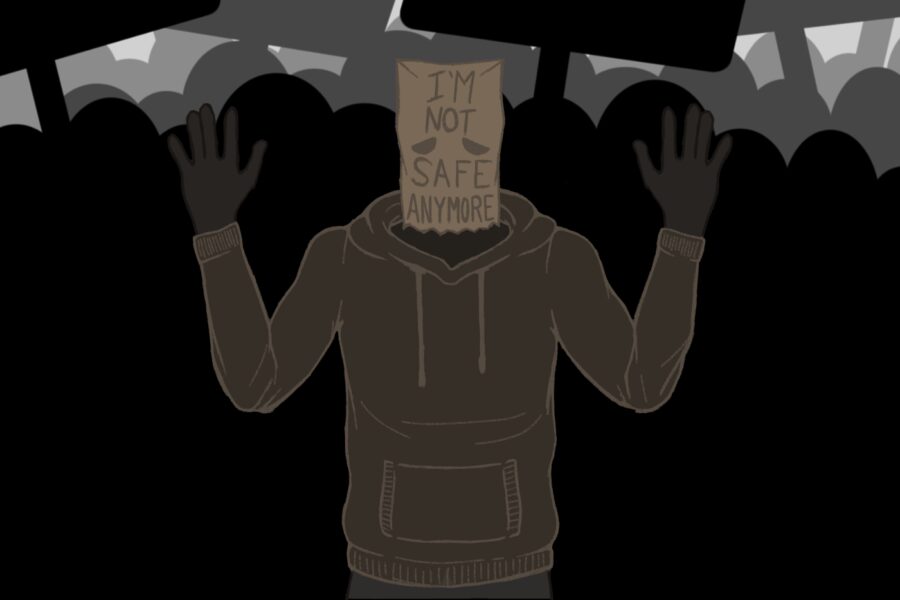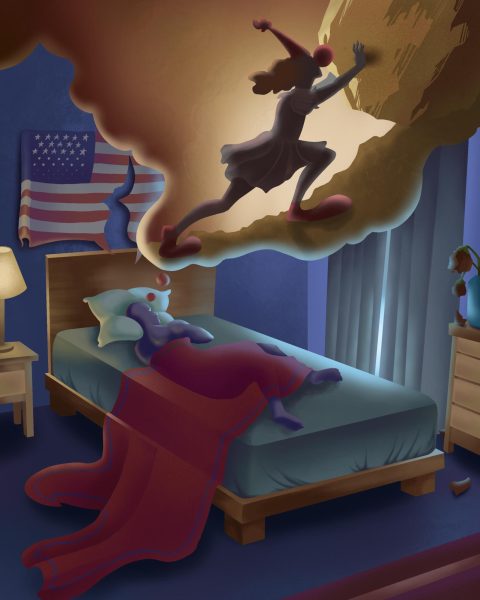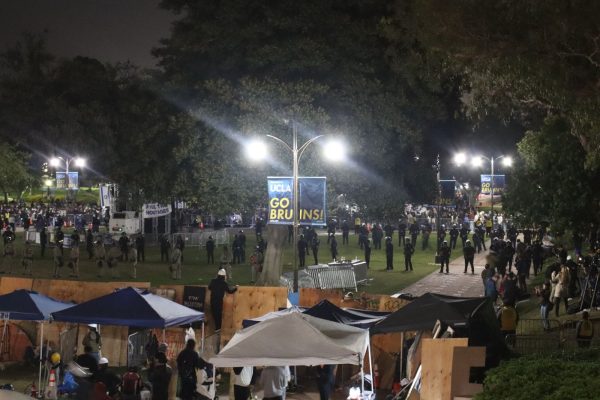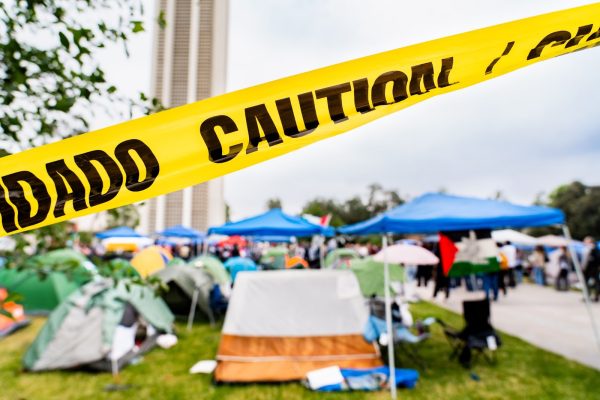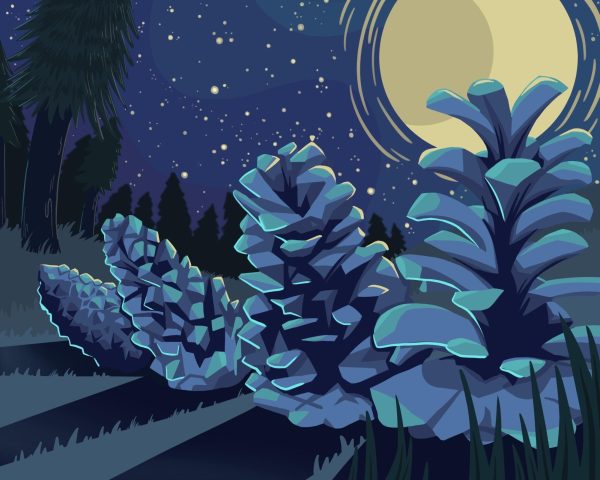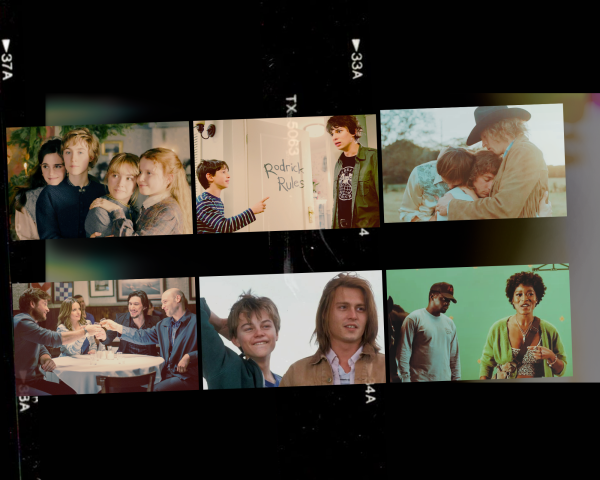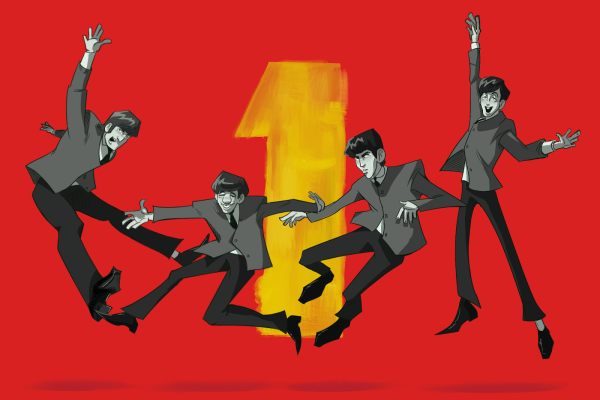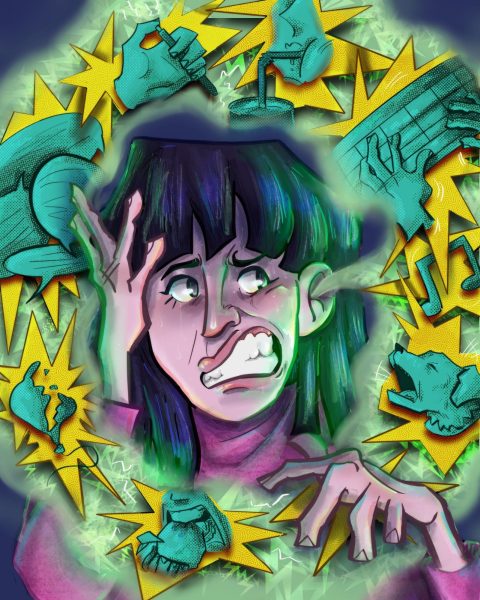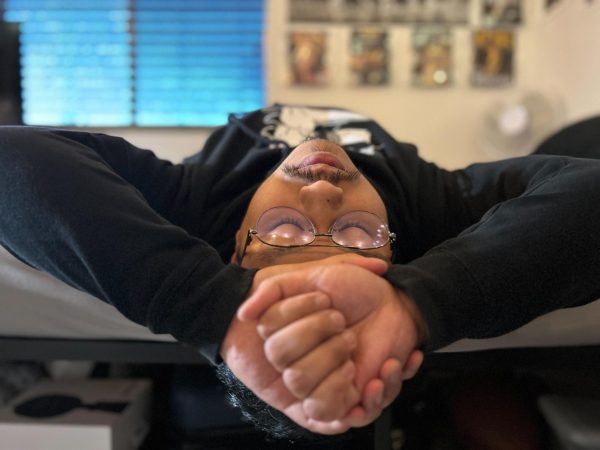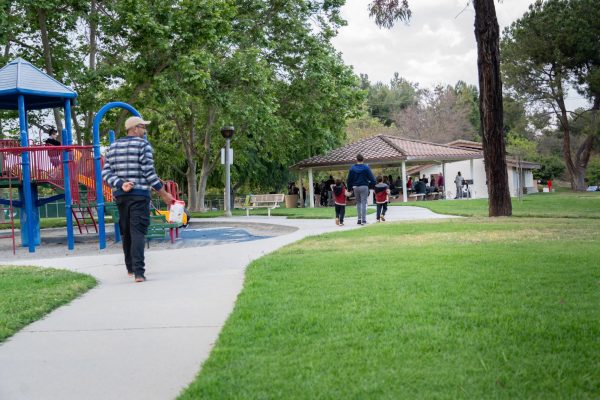Report, Don’t Refute the Facts
Redacting the identities of George Floyd protesters is not censorship, but a step towards dismantling systemic racism
Journalism has a habit of digging in its heels when change comes a-knocking. When the internet came around, many refused to believe that print journalism would crumble. It wasn’t until we saw papers folding that we took it seriously, and found ways to adapt. And despite leaps and bounds in our advancement of multimedia journalism, we are struggling to adapt to the ever-evolving world, made more difficult by the vast growth in technology.
We continue to report by traditional news writing standards as if the world around us has not changed. It is our duty as journalists to readily adapt to the world around us, to update our standards especially at crucial moments like these. It is our responsibility as journalists to report the reality of the news, yes, but the reality of the matter is, taking and publishing photos that show the faces of Black Lives Matter protesters feeds them directly back into the vicious cycle of police brutality and systemic racism that they are fighting against. We can’t accept police brutality and systemic racism as a fact, be on the scene witnessing countless acts of violence against peaceful non-threatening protesters (and journalists) and then turn around and knowingly play a part in that same system!
This is due to many factors including but not limited to the use of facial recognition software like Clearview AI by law enforcement agencies and the active presence of white supremacists and other domestic extremists within those law enforcement agencies. Although police departments have had access to facial recognition tools for almost 20 years, its never been like this. They previously have been limited to government-provided images and databases, like driver’s license photos or mugshots. As time has gone on, facial recognition algorithms have become more accurate, more readily available to the public, and, with the introduction of Clearview, more personalized.
Clearview is especially concerning because of its database. Comprised of scraping images from social media sites from Facebook to Twitter to Venmo (against many site’s terms of service), it creates a staggering database whose massive size is as concerning as the lack of testing from an independent party. It can find a match from photos where a person’s face may be covered by their glasses or a hat. It can even identify people when their faces are partially obscured. Like by a mask.
After the New York Time’s chilling exposé, some law enforcement agencies have decided to cut ties with Clearview. Their userbase previously consisted of 2,228 confirmed law enforcement companies, institutions, and agencies ranging from local police departments to US Immigrants and Customs Enforcement.
Although Clearview recently announced it will be restricting its userbase to only those associated with law enforcement or any level of government, companies like Amazon already offer products to the public that can create a facial recognition program that runs on any database of images. And, of course, you can’t forget that the active domestic extremists and white supremacists in U.S. law enforcement and government agencies will still have access to that software. You know, the kind of people that would be angry about something like the Black Lives Matter movement. Prejudiced, even.
The murder of George Floyd by Derek Chauvin, aided and abetted by Thomas Kiernan Lane, Alexander Kueng, and Tou Nmn Thao has set off a chain of events of which we have not seen the end. The protests that have followed once again taken up the chant of “Black Lives Matter,” originating from the hashtag that was created in 2013 after the acquittal of Trayvon Martin’s murderer, George Zimmerman. It was echoed around the world just one year later after the shooting of Micheal Brown, and again for Freddie Gray, and again for Walter Scott, and again for Sandra Bland, and again for Tamir Rice. The list only continues to grow, and police brutality and racial profiling across the nation only become more glaringly obvious. We know this system has failed the public. We know that this system seeks to harm the public. If we knowingly contribute to this corrupt system, what does that make us?
Not long after the dust had settled after the Ferguson protests, six men with connections to the protests mysteriously turned up dead, along with multiple accounts of the community being targeted through harassment, death threats, and attempts. One of the most notable is that of Edward Crawford, subject of the Pulitzer-winning photo that we have all seen from the Ferguson protests. The photo of Crawford in an American flag tank top throwing a flaming tear gas canister away from the crowd around him has served as a succinct reminder of the resiliency of the people seeking justice. It also leads to Crawford being thrust into the spotlight and placed him on a path to die just three years later, from a gunshot wound in the back of a car.
No one has been convicted of murder in Edward Crawford’s case, which was ruled a suicide pending an autopsy. This is a grim reminder of how the world operates. How things have gotten to this point. It is a fact that black people are unfairly prosecuted, attacked, and murdered. It is a fact that there are groups with power, privilege, money, and opportunity that seek to cause harm to not only the black community but people who support their cause. And it is a fact that they can use our photos and videos to do it.
The circumstances surrounding this movement are delicate and change by the minute — and yet again, we’re lagging behind the rest of the world. People have taken to social media to ask each other to be conscious of what they post, to be careful where they point their camera. Because the public already knows what it means to post an image to the internet, and how the permanence and ease of access facilitated by a journalist’s platform can ruin or potentially end someone’s life.

Andrew Mannix, a reporter for the Star Tribune, spoke up with his opinion on why it’s important for journalists to show people what is happening. He later deleted the tweet, after people started tweeting his phone number and address. He also said he had been receiving death threats. Those of us active on sites like Twitter know this outcome far too well. The “Twitter, do your thing” rallying cry has been used to seek mutual aid, raise awareness, and of course, doxx people. It turns out sensitive information like personal phone numbers and home addresses are not only startlingly easy to find online but in many cases, completely legal. There is no law that protects private citizens from being doxxed. You can get a lot of information on someone with just their name, photo, place of employment, and standard access to the internet. Now imagine what information you can get with access to technology like Clearview.
Getting doxxed is no new threat, we have seen it happen before and it will continue to happen until laws catch up with technology. We know there is no system in place to prevent people from gaining access to sensitive information with standard access to the internet. We could apply the same argument here — legally people are within their rights to hound Mannix all they want. Ethically it’s no question. But the difference between us and them is that we’re supposed to know better.
Mannix stands by his statement, knowing that he is within his rights to document a newsworthy event in a public place. But as Mannix and others are not understanding is that it is not a matter of legality, but journalistic discretion. Of course, it’s important for people to see what’s happening, no one is arguing that this is not an important, newsworthy event that deserves careful documentation. The argument is that ethically, that careful documentation requires a little extra legwork on our part. And for some reason, it is proving difficult to understand.
Our responsibility to the public is to report the news as we see fit, with things like the Society of Professional Journalists Code of Ethics to guide us. As the Poynter Institute said, legally there is no question. We are well within our rights to photograph public action. The argument is not if we can, but if we should. We’re talking kindergarten semantics — can vs. may. It’s time to stop digging in our heels, to stop resisting change. To admit that it’s time that we hold ourselves accountable. We as people cannot acknowledge the facts of police brutality and systemic racism without acknowledging our hand in upholding police brutality and systemic racism as journalists.
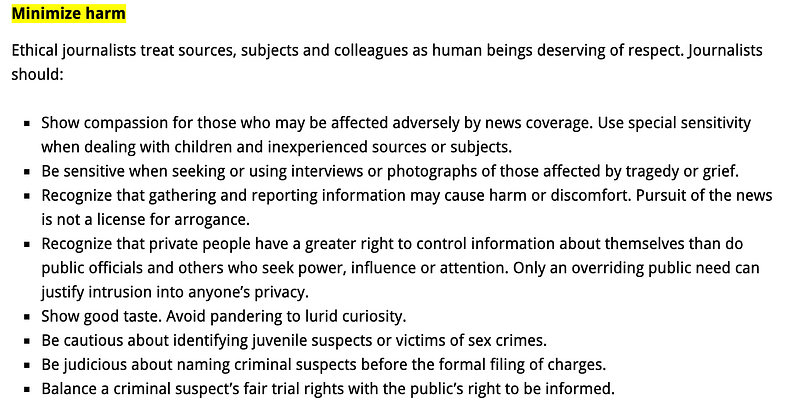
How can we claim to minimize harm or to be ethical journalists when by knowingly posting these photos, we knowingly put them into harm’s way? Poynter presented it as “rights vs. responsibilities.” According to the SPJ Code of Ethics, we know we should never distort the content of news photos and videos. But we also know to show compassion to people who will be affected adversely by using these photos, and when dealing with inexperienced subjects. We have irrefutable proof of both of those instances. We know people are in danger of getting their identities discovered by posting their images without their consent. We know the majority of these protesters are not seasoned activists but simply local people from their community. A lot of these protesters are young, straight out of high school or college-age. Yes, it is still their responsibility to know the risks and prepare accordingly. But it is also our responsibility to do our jobs ethically.
Clearly, they are inexperienced in comparison to law enforcement equipped with hundreds of dollars of riot gear and chemical agents outlawed in warfare. Clearly, they are unaware of the severity of the situation, because it shouldn’t be such a severe undertaking to protest and be heard. It shouldn’t be so dangerous to assert your democratic right to equality.
Protests and journalism have always had a symbiotic relationship, and historically, major protests have been well-documented events. But we cannot approach this like any other protest in history because this movement is unlike any other protest in history. It requires something unlike any other protest in history — the redaction of news photography and videos.
There are different ways we can approach this. We can scrub the metadata from the photos, redacting only the faces in the photo. We can ask for consent from the protestors, focus our efforts on crowd shots or photos from behind someone, or photos of their signs. The solutions to this are only limited by the lack of discussions we have with each other. We as journalists know the protests are a dangerous place to be. Even with our knowledge of the law, and our affiliation with our various news publications to protect us, the police have begun to open fire on journalists. The police are a threat to journalism, have actively started targeting journalists, and are trying to prevent us from reporting the truth. We know firsthand how severe these things have gotten. Will we stand idly by even though we know the current state of the world?
This does raise some issues we need to address, like what about everyone else? What about drone photography by law enforcement or private citizens, what about people attending the protests themselves and sharing photos, what about cities that are monitored by surveillance cameras? Well…what about them? Not only are we supposed to know better than the general public, but it is our job to do better than the general public. We get paid to do that. It’s appalling that journalists are proving so reluctant to think critically in this situation. And especially in Mannix’s case, we have seen that social media has already begun self-policing when it comes to this issue.
We already know law enforcement is using everything at their disposal — from surveillance cameras to drones to facial recognition to stingrays — so why contribute more to their unfair advantage? We have a responsibility to minimize harm. Photographers have an obligation to keep others safe. There’s no denying that these people are in danger. What are we going to do about it?
Another issue is that of implied bias. If we redact information to protect these protestors, are we not taking a side? No, of course not. There’s no such thing as “taking a side” when a life hangs in the balance. There’s no such thing as bias when prejudice is a fact. We would not be taking a side but potentially saving a life. You can’t take refuge in the sanctity of publishing in the name the “greater good” if by doing so you directly obstruct it. It doesn’t matter what awards or recognition your work receives if it comes at the price of deliberately and knowingly putting someone in harm’s way.
The issue of protection is also often brought up: but what about the other side? Wouldn’t police officers ask for the same thing? Wouldn’t the white supremacists want the same thing? Honestly, in this day and age with everything else falling so behind advancements in technology, who wouldn’t? But they have not been proven to be targeted like these protesters are. They have not proven to die mysteriously after the protests are over. Again, the responsibility falls on us. We are no strangers to the practice of journalistic discretion. We constantly have to weigh the priorities of the public against the necessities of our subject. Who benefits the most from us publishing this story? Who could we hurt by publishing this story? Who could we protect? We know the answers to these questions, and surely we know what we must do.
Journalism is no stranger to taking a hard stance in the face of hot-button issues, like with the Los Angeles Times’ stance on letters from climate-change deniers. The same reasoning applied there can also be used in this instance — it is not an opinion but a fact that these protestors are in danger, and that we would be aiding in any harm that comes their way by posting their image. We would be “asserting a factual inaccuracy” by operating under the assumption that the system is equal and just to everyone.
The pursuit of the news is not a license for arrogance. At the very least, we as journalists owe it to the public to have this discussion not only with each other but with ourselves. Not only as an individual but as a newsroom. Not only as a college campus but as a legacy news publication. We need to acknowledge that our complacency in systemic racism. We need to acknowledge our role in systemic racism. And we need to take steps to dismantle it. We can find new, innovative ways to tackle this issue if we can only listen, to both the concerns of each other and the concerns of the public. We can find a compromise without compromising someone’s democratic pursuit of justice. We can do impactful, inspiring unbiased work without endangering people. We can keep up with the rest of the world, we just have to start moving forward.

